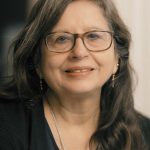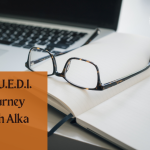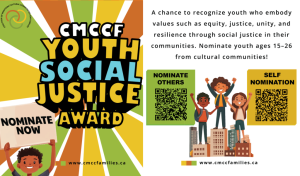
Dear readers and friends,
I must begin with an apology as my February blogpost is much delayed. Perhaps I can try to point to something positive here-you will have the opportunity to hear my voice twice this month instead of just once! (as our very last post for this current project year, due in March, will follow soon).
This cold city with the warmest of hearts-Winnipeg!
Speaking of positives, there is so much worth celebrating and reflecting upon with all that CMCCF has been doing lately that I don’t really know where to begin! For starters, let me tell you where I’m sitting while I write this piece…you know that little sitting area in the Polo Park shopping mall in your city- that tiny spot of space between the Second Cup and Kernels (the popcorn kiosk) that has 4 little round tables where you can set yourself and your bags down after a hectic shopping spree, and enjoy a coffee with your tired self or with a friend? Yes, you guessed it, I am indeed in Winnipeg! In Polo Park.
I must add that each time I return to this city where I first arrived as an immigrant sixteen years ago, I experience somewhere deep in my gut one more time all those mixed first emotions I felt back then, while I also feel in the present how much like home this place still feels-this cold cold city with the warmest of hearts-Winnipeg! I do love you…
Celebrating and sharing our two-year journey
I flew in from Toronto- where I live now-to join the hard-working and committed CMCCF folk in person, for the March 1 celebration. The objective of this event was to mark the culmination of our two-year JEDI Initiative, and to share with community members, and with our organizational partners and friends of CMCCF, some snapshots from the journey that has led us to this important milestone. We also wanted to give voice-to each of us who participated actively- to our experiences of contributing to these projects, exploring why this work we did it felt so authentic and so impactful, and what our big-picture takeaways were. Stay tuned for the full account of this celebration from our wonderful community writer Patricia, soon to follow.
A big thank you…
For now, I will simply say a few words expressing gratitude: thanks to our funders-Heritage, Government of Canada, The Winnipeg Foundation, Winnipeg Regional Health Authority, (WHRA), and the Suicide Prevention Network, for making it possible for us, at CMCCF, to be bridge builders; by providing us funding, you helped us amplify the stories and voices of cultural communities in Manitoba.
We also extend our heartfelt thanks to the staff of the organizations that formed our organizing committee for the `Envisioning the Future’ event in Portage la Prairie on Feb 29 (more on that below), including: MANSO, Portage Local Immigration Partnership, Portage Learning and Literacy Centre, and Chief Donny Smoke of Dakota Plains First Nation. Thanks also to Mediation Services, our organizational partner, for providing the space for our March 1 celebration event; and I add a special note of appreciation for the Executive Director, Christine Ens, our generous host, for not only sharing the space, but for the most beautiful, respectful and truly inclusive land acknowledgement I have ever heard!
I must also tell you how gratifying it was to see the space being packed to capacity-little room left even for standing; and the engagement, energy, and momentum to drive change in that room last night was truly electric. Congratulations to each and every one of you present who made this curious magic happen!
A special evening in Portage la Prairie
There was another magical evening though that I want to focus upon in the rest of this post. And this came the day before March 1. Arriving in the city a day in advance, just in case the weather became unwelcoming on the day I needed to be here in Winnipeg, I was invited by Martin and Steve to join the `Envisioning the Future of Portage la Prairie Cultural Communities,’ on February 29.
Having never had a previous opportunity to visit Portage la Prairie despite having lived in Winnipeg for 10 years, I quickly cancelled everything else I had planned for my extra day here. To be honest, that was just one reason; the other one that compelled me even more was the promise of seeing the unfolding of an important process like `envisioning the future’ as implemented in this somewhat small sized city located 70 km west of Winnipeg, with a population of just over 13,000 (as per the 2021 census).
I will try my best to recap what I saw happen that evening in one of the classrooms at the Portage Learning and Literacy Centre (PLCC) where we met-the group of about fifteen community members, and the three of us who joined them from Winnipeg-Martin, Steve, and myself.
As a disclaimer, I should add that as hard as I may try, any words I use to describe the process I was privileged to witness at PLCC will be inadequate in truly communicating the `experiential’ quality of that evening we shared with each other as a community.
Envisioning the future of cultural communities in Canada
Handouts providing instructions for the activity-based community engagement were placed on each of the 3 tables, and Martin and Steve led the group through the `Envisioning’ process. Participants at each table introduced themselves; and following the principles of `Appreciative Inquiry’ (which in essence means focusing on strengths and positive aspects rather than on challenges and gaps, be it in the context of individuals or situations), in Round One, each table went through the ‘Discovery’ process.
The remaining three rounds focused on `Dream’ and `Design’ to arrive at a future time, or `Destiny.’ Patricia’s Nov 15 story on the CMCCF website has a much more detailed account of the Appreciative Inquiry approach, as well as a description of the similar envisioning session held in Winnipeg on Oct 7, 2023.
You could also see the YouTube video of this recorded session.
Where will we be in the year 2040?
The big question and ask presented to the participants this evening was to envision what their community in Portage la Prairie would look like in the year 2040; what their dreams and hopes were of that vision and time; and what would the development of action plans to realise such a vison might look like.
In order to get to such a place, participants were tasked to use the appreciative inquiry principles to (i) reflect upon and share a specific lived experience when they felt most engaged and motivated to work towards actualising their ideas and dreams; (ii) identify their unique assets that would come in handy as they began to develop their plans for 2040; and (iii) think deeply about what is working well right now that could be made even better if they focused on strengthening the potential of their community to achieve their vision for the future.
Why it works: Summarising highlights from the envisioning process
I fear that going into the detailed nitty-gritty of the 3-hour process would make for long and tedious reading; I will then summarise what stood out for me that evening of Feb 29 in Portage le Prairie, and why I thought it was so resonant and impactful. One, the envisioning process itself was powerful as it created the space for imagination to flourish, and this led participants on a journey where as a group, they could explore the collective resources they already possessed- in terms of their assets, strengths, networks and relationships.
Two, they were prompted to engage in activities where they could, as a group, select topics for discussion that they felt interested in pursuing. For instance, the three topics selected unanimously by the large group were Cultural Preservation, Integration, and Youth Leadership; and each group exercised agency and ownership in choosing the specific topic for their group.
Three, the process provided a structure for groups to design their vision statements, followed by concrete action plans for implementing this vision so they may achieve their goals. Four, the process also made space for reflection in an ongoing manner, and this was instrumental in ensuring that engagement was enhanced and holistic, being not only at an intellectual level but emotions too played an active role.
Finally, the process used `play’ in a collaborative manner, and as a group in the final phase of this engagement process, participants used lego bricks to co-create their models for realizing their futuristic 2040 vision for their community.
The excitement of implementing and sharing their vision with each other was clearly a passionate and empowering finale to this envisioning activity, and although nothing about their community had actually changed, they had hope, optimism and shared goals that could move them forward on this journey.
They had also developed collaborative relationships with each other along the way that helped them see the vision and path a bit more clearly. And they also knew that this was just the beginning of their journey, and it would be a long uphill trudge, but the real point was, as a community, they were eager to commit themselves to the process.
A transformative process: We can be architects of our own destiny
Starting from a point in the process where they had been surprised by the question, as `nobody had ever asked for their views on what they would like their community to look like’ to this final point of them being the architects of their own destiny was both an emotional aha moment as well as an empowering one.
Needless to add, the passion in that room was as powerful as it was insightful, and it was definitely contagious! It was after 8:30 pm and people seemed reluctant to get up and go home! It seemed like something had changed, both internally and externally. As an outsider and a mere observer, the experience I had shared with them had helped me `see’ something I had not seen before, and this had made something inside me shift too.
There are other important learnings from this process that I must share, and create respectful space for- in our ongoing conversations; as, we-CMCCF-as an organization, are continuing to evolve. In addition, there are big-picture takeaways, both from this process that I feel grateful to have been a part of, as well as from the overall work we do as members of the Coalition; and in my next blog (also the last and concluding one in this series), I promise to highlight some of these.
Happy reading, and thanks for being part of our JEDI journey.

The views expressed in this blog post are mine, and I take full responsibility for them. We are always wanting to hear from you – please share your thoughts and feedback by completing our contact form here or by emailing hello@cmccfamilies.ca.
To learn more about our Intercultural and Intergenerational Diversity and Inclusion Engagement Project, go to our J.E.D.I. Initiative landing page here.

 Previous Post
Previous Post
